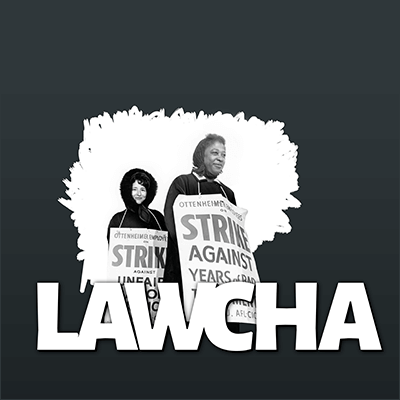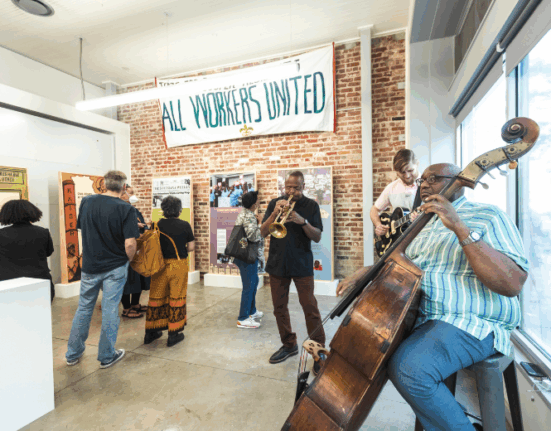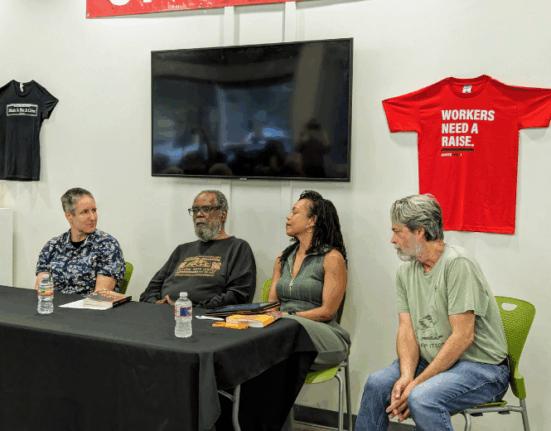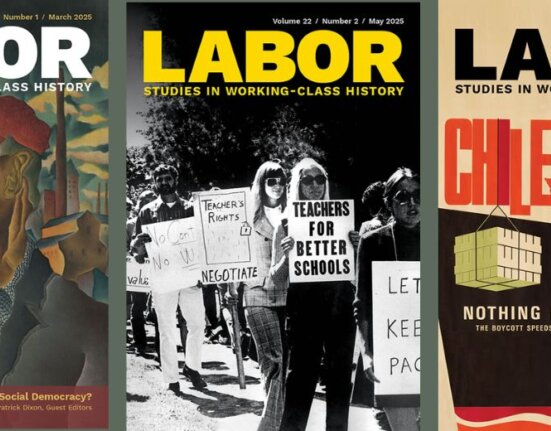A new LAWCHA initiative to develop classroom and public knowledge of labor history
Back when Congress was able to govern and Teaching American History grants provided rich opportunities for college faculty to engage with K-12 teachers, I had the gratifying experience of participating in three different rounds of funding. Each cohort of teachers went through a similar exercise with me, paging through high school social studies textbooks in search of labor and working class history. To no ones’ surprise, the narratives we discovered were few and deeply distorted. The problem is a significant one because of the fundamental role of working-people in American history, and the fact that labor’s accomplishments in both the public and private sectors shaped such all-pervasive ideals as the American Dream. But even more importantly, kids who grow up in the parts of the nation that look like the region where I teach – post-industrial, rural and poor – need the perspective that labor and working-class history brings as a way to see their present through the past.
For all of these reasons, in 2009 I encouraged the Labor and Working Class History Association to establish a Teaching Resources committee, which developed into its current Teacher/Public Sector Initiative, as a way to promote LAWCHA’s mission to “promote public and scholarly awareness of labor and working-class history” and its commitment to “teaching labor history in the classroom, from K12 to colleges and universities.” One of the committee’s major goals was to make labor history accessible on line. By 2012, the group linked Rosemary Feurer’s award-winning Labor History Links to the LAWCHA website and began developing the Teaching Resources materials that now include links to essays, powerpoints, and graphs on union history. In 2014 Rosemary Feurer proposed a special initiative to develop a Teaching and Public sector workers toolkit. LAWCHA agreed to hire Adam Mertz to assist. That project produced an annotated bibliography of primary and secondary sources that was placed on the LAWCHA website, as well as an introductory essay and teaching blogs. The committee also participated in conferences with teachers unions and labor educators, who called for development of actual teaching units for the classroom.
When Nikki Mandell took the lead of the initiative in 2015, she conferred with LAWCHA members who had been working with classroom teachers, labor educators and university students and proposed an ambitious new project we are currently calling “Teaching Labor’s Story” (TLS). TLS is a project under LAWCHA’s Teaching/Public Sector Initiative that will build a repository of annotated primary sources for educators to use to bring labor and working-class history into their classrooms.
In our engagement with teachers, LAWCHA members have become increasingly sensitive to the many demands on teachers’ preparation and classroom time; curricular demands from above; the probability that most have not studied labor history; and the political difficulty some may have when attempting to teach the subject of “labor history.” These realities have shaped the TLS project and help differentiate it from the materials available on LAWCHA’s Labor History Links webpage. There teachers will find excellent materials but ones that are not curated. TLS takes a different tack and presents sources that can be readily incorporated by experts and non-experts alike.
Rather than the episodic and misleading way labor and working-class history appears in textbooks today, TLS is designed to make it possible for teachers to incorporate labor’s story as a central theme throughout their history course. Using the National Council for History in the School’s chronological organization, TLS divides sources among ten historical eras. Then, sources in each period are selected to reveal historically significant perspectives on essential historical questions. If the original source is longer than 1,000 words, scholars edit them down for classroom use. Finally, each source is annotated to include curricular connections, citation, brief contextualizing essay that explains historical significance, glossary, discussion points, document questions, questions relating to the historical period and to labor history more generally and a list of additional sources. In total, each TLS annotated source runs four to five pages.
Currently the TLS project has been designed and developed and a handful of completed annotated source projects have been field tested. We are now moving to the next phase: a call for contributors. LAWCHA invites labor historians to contribute to “Teaching Labor’s Story.” Those eligible to contribute include LAWCHA members; faculty, independent scholars, teachers and graduate students recommended by a LAWCHA member; and undergraduate students under the mentorship of a LAWCHA member. All projects will be peer-reviewed. The TLS template will soon be available on the LAWCHA website. Want to contribute? Let us know at lawcha.tls@gmail.com and we will send you a template and contributor information.







